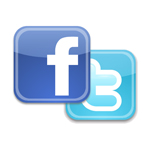
As members of the Social Media's Big 3 (Facebook, Twitter, and YouTube), it seems that media companies are still not sure whether Facebook and Twitter are friends or foe relative to their legacy advertising-centric business models.
The world of online media used to be more predictable when there wasn't much innovation, and all the big players in the business could anticipate their lack of creativity and cover their weaknesses with marketing. But it was just a matter of time before everything changes.
According to the latest market assessment by eMarketer, Facebook and Twitter have taken evolutionary steps to become publishing platforms for news. These 2 social media sites have been well-known for its capabilities to publish text, photo, video and entertainment contents. But as the world see social media a little different that before, Facebook and Twitter has taken another step forward.
"Users now understand that the more they share, the more they discover," said Paul Verna, senior analyst at eMarketer. "And the more they discover, the more likely they are to turn first to Facebook for content they used to get elsewhere."
Since late 2011, Facebook has been gradually rolling out its Timeline interface, which puts greater focus on media activity compared to the previous Facebook news feed.
According to a report from Simply Measured, as of February, worldwide content engagement on Facebook has gone up by 46 percent -- compared with before the launch of the Timeline. And apparently, Twitter's addition of the "Discover" tab to its navigation menu was also designed to encourage interaction among users and published stories.
Even before Timeline, Facebook’s strategy has been to use social apps to draw users into the media space. It is believed that this this has proven to be a winning strategy for Facebook and its media partners.
"Whether through the efforts of media companies or the unprompted sharing activity of users, more media content is making its way across the social web. This trend has put Facebook and Twitter at the center of the media ecosystem and turned their users into active participants in the content loop," Verna continued.
According to the findings from the Pew Research Center Project for Excellence in Journalism, 39 percent of Twitter users said most of the news they got on Twitter in January 2012 was not material they would have read elsewhere. While on the same time, Facebook corresponded percentage was a just a little bit lower at 34 percent.
Therefore, by eMarketer's current estimates of the Twitter and Facebook user bases in 2012, more than 11 million Twitter users and more than 48 million Facebook users are getting news on those services.
Verna has concluded that "Marketers who are savvy about how to use Facebook are focusing on the site's strength as a content portal, its viral power and its ability to deliver qualitative and quantitative feedback on brand campaigns."